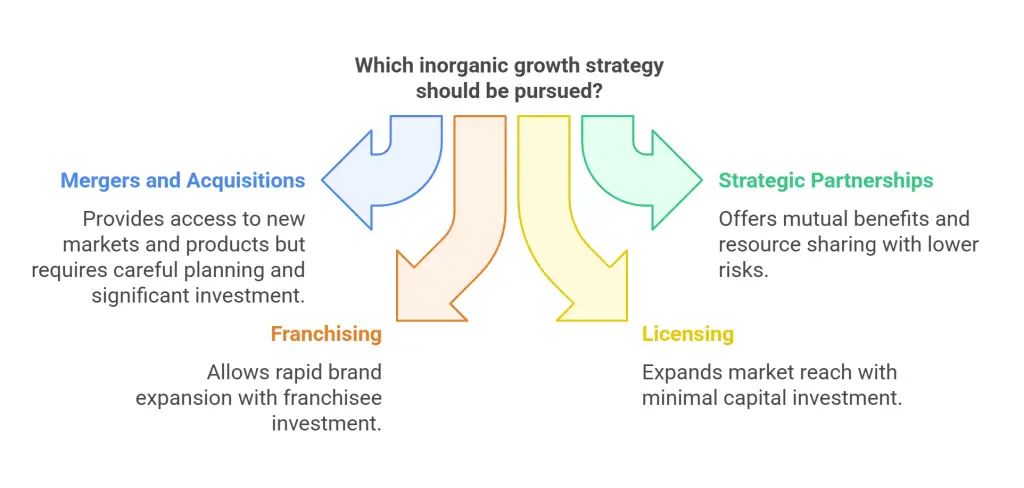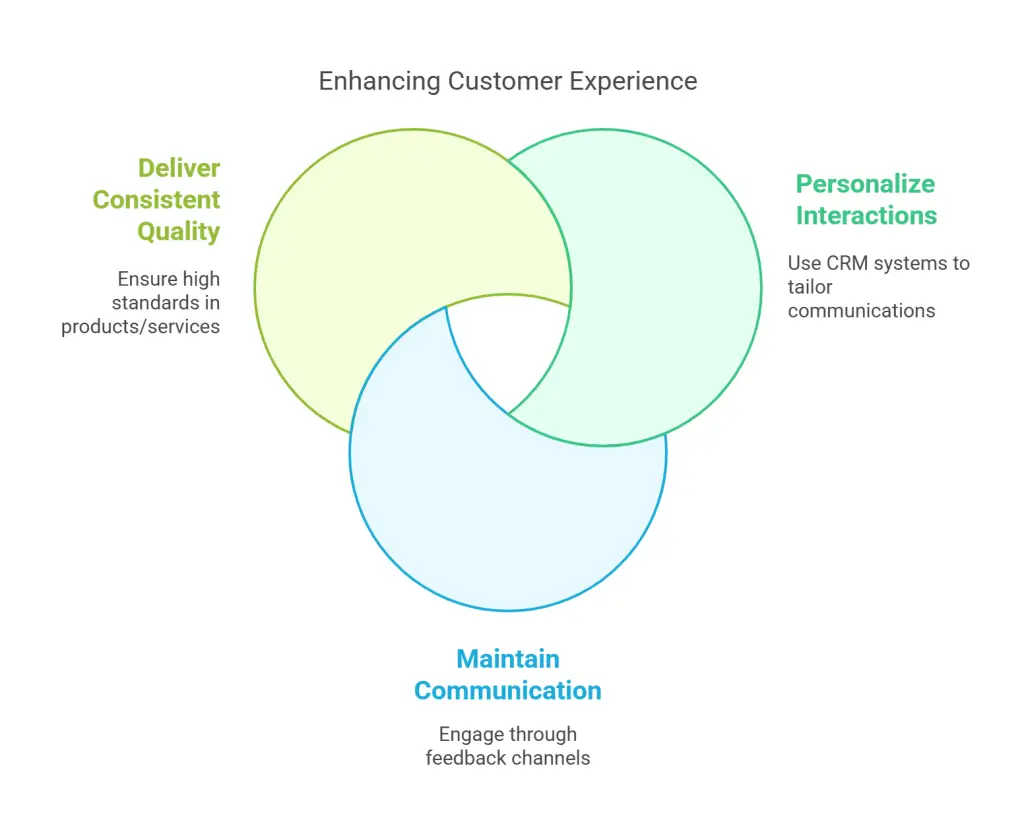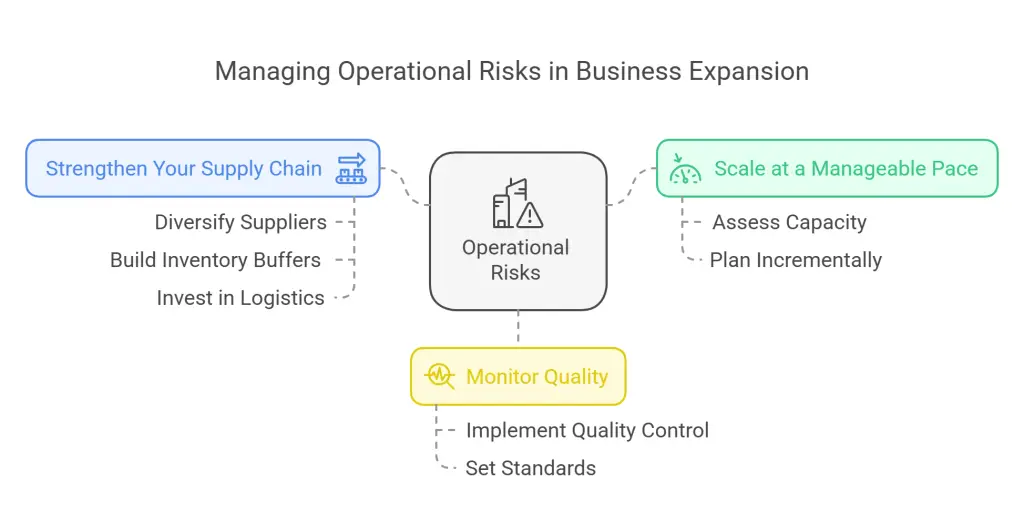Growth isn’t just an ambition—it’s often essential. Yet scaling a small business can be tricky: you want to boost revenue, expand your customer base, and solidify your market presence without stretching resources too thin. This post explores Growth Strategies for Small Businesses that help you scale efficiently while preserving quality and sustainability.
By focusing on clear objectives and aligning new initiatives with your core strengths, you can seize opportunities that support sustainable, long-term expansion. Smart growth isn’t about quick wins; it’s about building a solid foundation that propels your business forward while staying true to what makes it unique.
Understanding Business Growth: What Does It Mean?
Before diving into the strategies, it’s crucial to understand what business growth entails. Growth is not just about expanding in size or increasing sales. For a small business, growth should be synonymous with sustainable development. It means enhancing your capabilities, refining your processes, and deepening your customer relationships while increasing your revenue and market share.
Types of Growth
- Revenue Growth: This is the most direct and measurable form of growth. It involves increasing your sales through new customers, higher transaction values, or repeat business.
- Market Expansion: Growth can also mean entering new markets, whether by geographic expansion, targeting new demographics, or offering new products or services.
- Operational Growth: As your business grows, so should your operational capabilities. This includes hiring more staff, expanding your facilities, or enhancing your technology.
- Customer Base Growth: Increasing the number of customers is another key aspect. This can be achieved through marketing strategies, customer referrals, and improving customer retention.
- Brand Growth: Building your brand’s reputation and recognition is a subtler but equally important form of growth. A strong brand attracts customers, retains them, and gives you an edge over competitors.

Common Growth Strategies for Small Businesses: Organic vs. Inorganic
When it comes to growth strategies, small businesses typically have two primary options: organic and inorganic growth.
Organic Growth
Organic growth refers to the process of expanding your business through internal efforts, without relying on mergers, acquisitions, or partnerships. This is often the most sustainable form of growth for small businesses, as it allows you to maintain control over your operations and grow at a pace that aligns with your resources.
Key Strategies for Organic Growth:
- Improving Sales and Marketing: Enhancing your sales strategies, optimizing marketing campaigns, and focusing on customer experience can lead to organic growth by increasing revenue from existing customers and attracting new ones.
- Product Development: Expanding your product or service line to meet customer needs can drive growth. This could involve improving existing products, introducing new ones, or diversifying your offerings.
- Customer Retention: Retaining existing customers is often more cost-effective than acquiring new ones. By improving customer service, offering loyalty programs, and consistently delivering value, you can grow your revenue organically.
- Geographic Expansion: Moving into new locations or markets within your existing operational framework is another form of organic growth. This strategy works well when you have a proven business model that can be replicated.
- Investing in Technology: Technology can streamline operations, improve customer experience, and provide data-driven insights to fuel growth. Investing in the right technology can enhance your business’s efficiency and scalability.

Inorganic Growth
Inorganic growth involves expanding your business through external means such as mergers, acquisitions, or partnerships. While this can lead to rapid growth, it often requires significant investment and can introduce complexities that organic growth strategies avoid.
Key Strategies for Inorganic Growth:
- Mergers and Acquisitions: Acquiring or merging with another company can provide instant access to new markets, products, and customers. However, this strategy requires careful planning to ensure a successful integration.
- Strategic Partnerships: Forming alliances with other businesses can provide mutual benefits, such as sharing resources, entering new markets, or combining expertise. Partnerships can be particularly effective for small businesses looking to expand without the risks of a merger.
- Franchising: If your business model is highly replicable, franchising can be an effective way to grow quickly without bearing the full cost of expansion. Franchising allows you to expand your brand while leveraging the investment of franchisees.
- Licensing: Licensing your products or services to other companies can expand your market reach without the need for significant capital investment. This strategy allows you to benefit from the expertise and resources of established companies.
- Joint Ventures: A joint venture involves partnering with another company to create a new entity. This can be a powerful way to enter new markets, share risks, and pool resources for large-scale projects.

Scaling Operations Without Losing Quality
One of the biggest challenges for small businesses as they grow is maintaining the quality that customers have come to expect. Rapid growth can strain resources, overwhelm staff, and lead to inconsistencies in product or service delivery. To scale smartly, it’s crucial to implement strategies that ensure quality remains high as your business expands.
Invest in Process Optimization
As your business grows, your processes need to evolve. What worked when you were a small operation may not be scalable as your business expands. Investing in process optimization involves streamlining workflows, eliminating inefficiencies, and implementing automation where possible.
- Standardize Processes: Create clear, documented processes for every aspect of your business. Standardization ensures that tasks are performed consistently, regardless of who is handling them.
- Implement Automation: Automation tools can take over repetitive tasks, freeing up your team to focus on more critical aspects of the business. For example, automating your customer service through chatbots or your marketing through email automation tools can improve efficiency.
- Continuous Improvement: Adopt a culture of continuous improvement, where employees are encouraged to suggest process enhancements. Regularly review and refine your processes to ensure they remain effective as your business grows.

Hire Smartly and Train Thoroughly
As you scale, your team will need to grow too. Hiring the right people and providing thorough training is essential to maintaining quality.
- Hire for Cultural Fit: When expanding your team, it’s crucial to hire individuals who align with your company’s values and culture. This ensures that new employees will maintain the standards that are important to your business.
- Provide Comprehensive Training: Invest in robust training programs that not only teach new employees how to do their jobs but also instill in them the importance of quality. Ongoing training should be a priority to keep skills sharp and align with your evolving processes.
- Empower Your Employees: Give your team the tools and authority they need to maintain quality. Empowered employees are more likely to take ownership of their work and contribute to the overall success of the business.

Focus on Customer Experience
Your customers are the backbone of your business, and as you scale, it’s vital to keep their experience top of mind. A great customer experience is one of the most effective ways to ensure repeat business and referrals.
- Personalize Interactions: As your customer base grows, it can be challenging to maintain personalized interactions. Utilize customer relationship management (CRM) systems to track customer preferences and personalize communications.
- Maintain Communication: Keep open lines of communication with your customers. Regularly seek feedback and use it to improve your offerings. Engaging with customers through surveys, social media, or direct communication can help you stay connected as you grow.
- Deliver Consistent Quality: Consistency is key to a great customer experience. Ensure that your products or services are delivered to the same high standard every time, regardless of how fast your business is growing.

Managing Risks While Scaling
Growth brings opportunities, but it also introduces risks. To scale smartly, small businesses must identify potential risks and implement strategies to manage them.
Financial Risks
One of the most significant risks associated with scaling is financial. Rapid growth requires investment, and if not managed carefully, this can lead to cash flow issues or unsustainable debt.
- Manage Cash Flow Carefully: Cash flow management becomes increasingly important as you scale. Ensure you have a solid understanding of your cash flow and plan for the additional expenses that come with growth.
- Secure Financing: Consider securing financing before you begin scaling. This could be in the form of a business loan, line of credit, or investment. Having access to funds will help you manage the costs of growth without straining your resources.
- Monitor Financial Health: Regularly review your financial statements to ensure your growth is sustainable. Look out for red flags such as declining profit margins or increasing debt levels.

Operational Risks
As your operations expand, so do the complexities of managing them. This can lead to operational inefficiencies, supply chain disruptions, or overextended resources.
- Scale at a Manageable Pace: While rapid growth can be exciting, it’s essential to scale at a pace that your operations can handle. Overextending too quickly can lead to operational breakdowns.
- Strengthen Your Supply Chain: Ensure your supply chain can handle increased demand. This might involve diversifying suppliers, building inventory buffers, or investing in logistics infrastructure.
- Monitor Quality: As mentioned earlier, maintaining quality is crucial. Implement quality control measures that can scale with your operations to prevent any decline in standards.

Market Risks
Entering new markets or launching new products always carries the risk of failure. Consumer preferences can change, and what worked in one market might not work in another.
- Conduct Thorough Market Research: Before entering a new market or launching a new product, conduct detailed market research. Understand the needs, preferences, and behaviors of your target audience to ensure your offering will be well-received.
- Start Small: When entering a new market or launching a new product, start small and test the waters. This allows you to make adjustments before committing significant resources.
- Stay Agile: The market can change rapidly, and successful businesses are those that can adapt. Stay agile by regularly reviewing market trends and being ready to pivot your strategy if necessary.

Case Study: Smart Growth Strategies in Action
To illustrate the principles we’ve discussed, let’s look at a fictional case study of a small business that successfully scaled without compromising quality or sustainability.

Meet Sarah: The Founder of “EcoFresh”
Sarah founded “EcoFresh,” a small business specializing in eco-friendly cleaning products, in 2016. What started as a kitchen experiment with natural ingredients turned into a full-fledged business after Sarah received overwhelming support from her local community. By 2018, EcoFresh was a popular brand in her hometown, but Sarah wanted to take it to the next level.
The Challenge: Scaling While Staying True to Values
Sarah’s challenge was to scale her business while staying true to the values that had made EcoFresh successful—quality, sustainability, and a personal touch. She also needed to ensure that her operations could handle the increased demand without sacrificing these values.
Strategy 1: Organic Growth Through Market Expansion
Sarah decided to focus on organic growth by expanding her market reach. Rather than jumping straight into new territories, she began by expanding her product line to include eco-friendly laundry detergents and fabric softeners. This allowed her to increase revenue from her existing customer base while attracting new customers.
Once her new products were well-received, Sarah started selling EcoFresh products online. She built an e-commerce website and invested in SEO to ensure that her products reached a broader audience. By 2019, EcoFresh was shipping nationwide, and Sarah’s revenue had doubled.
Strategy 2: Process Optimization and Technology Investment
As demand for her products grew, Sarah realized that her manual processes wouldn’t be able to keep up. She invested in process optimization by automating her production line, which not only increased output but also maintained the high quality of her products.
Sarah also implemented a customer relationship management (CRM) system to manage her growing customer base. This allowed her to personalize communications, track customer preferences, and ensure that every customer received the same high level of service.
Strategy 3: Maintaining Quality Through Smart Hiring
To manage the increased workload, Sarah needed to expand her team. She focused on hiring individuals who were passionate about sustainability and aligned with EcoFresh’s values. Sarah provided thorough training and empowered her team to take ownership of their roles, ensuring that quality was maintained even as the business grew.
Strategy 4: Managing Risks with Financial Planning
Scaling her business required significant investment, so Sarah worked with a financial advisor to create a detailed financial plan. She secured a small business loan to finance the automation of her production line and the development of her e-commerce platform. By carefully managing her cash flow and monitoring her financial health, Sarah was able to scale her business without overextending her resources.
The Outcome: A Successful, Sustainable Growth
By 2021, EcoFresh had grown from a local brand to a nationally recognized name in eco-friendly cleaning products. Sarah’s business had scaled significantly, yet she had managed to maintain the quality, sustainability, and personal touch that had made EcoFresh successful in the first place.
Sarah’s smart growth strategies—focusing on organic growth, optimizing processes, hiring the right team, and managing financial risks—allowed her to scale her business sustainably and successfully. EcoFresh is now a model of how small businesses can grow without losing their core values or compromising on quality.

Conclusion
Scaling a small business is both exhilarating and challenging. As you expand, it’s crucial to preserve the quality and values that set you apart while managing risks and embracing diverse growth opportunities.
Whether you pursue organic growth by optimizing operations or opt for inorganic growth via strategic partnerships, a balanced approach is key to lasting success. By focusing on process improvements, assembling the right team, and engaging with your customers, you set the stage for sustainable expansion.
In conclusion, integrating Growth Strategies for Small Businesses into your plan ensures you maintain your core identity while scaling smartly. By leveraging proven Growth Strategies for Small Businesses, you can build a resilient enterprise ready to thrive in the long term.
Further reading
Churchill, Neil C., and Virginia L. Lewis. “The Five Stages of Small Business Growth.” Harvard Business Review, May 1983. https://hbr.org/1983/05/the-five-stages-of-small-business-growth.
Shopify. “Small Business Growth: Strategies and Tips for Success.” Shopify Blog, January 2024. https://www.shopify.com/au/blog/business-growth.
GoCardless. “6 Strategies for Small Business Growth.” GoCardless Guides, 2024. https://gocardless.com/en-au/guides/posts/6-strategies-for-small-business-growth/.
Business Tasmania. Business Growth Strategy 2026. Tasmania: Department of State Growth, 2024. https://www.business.tas.gov.au/managing/business_growth_strategy_2026.
The Hartford. “How to Grow a Small Business: Strategies for Success.” The Hartford Business Insurance, 2024. https://www.thehartford.com/business-insurance/strategy/accelerate-growth/how-to-grow-small-business.
U.S. Chamber of Commerce. “Best Small Business Growth Strategies.” CO— by U.S. Chamber of Commerce, 2024. https://www.uschamber.com/co/start/strategy/best-small-business-growth-strategies.







